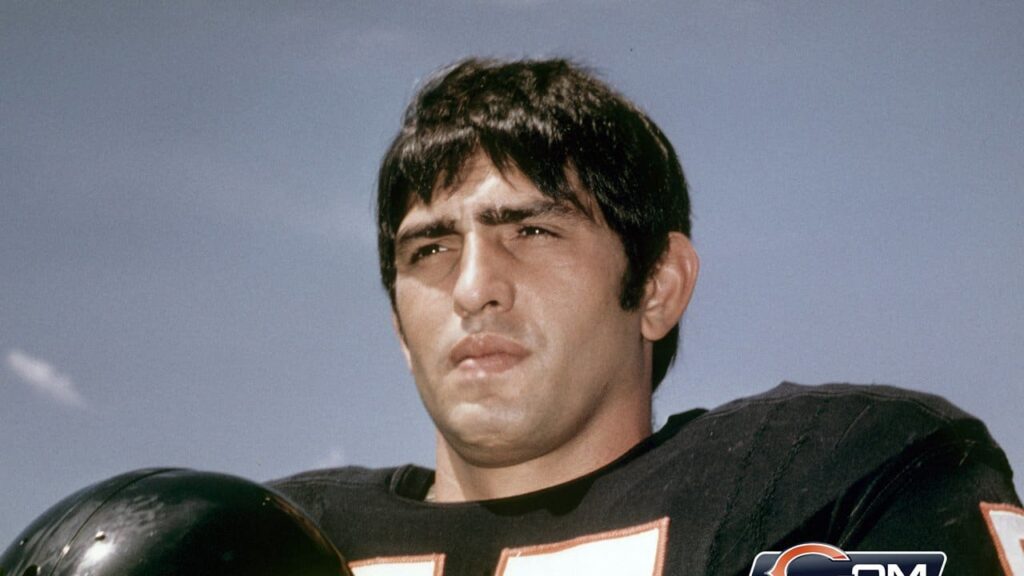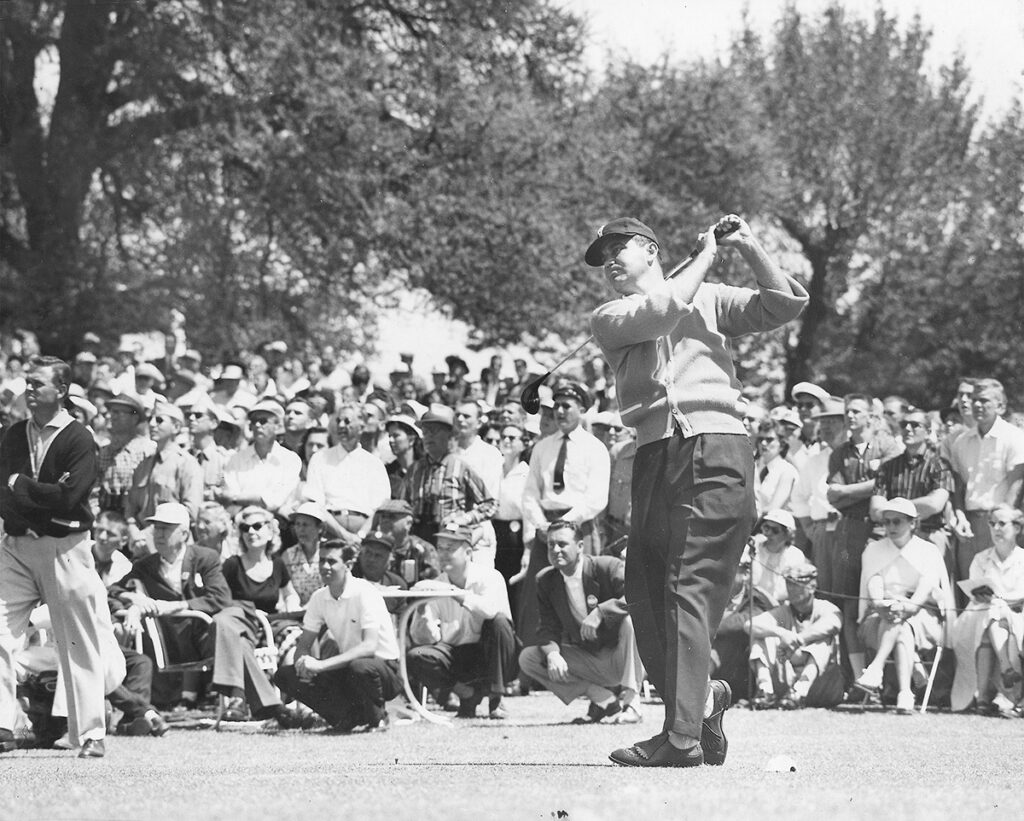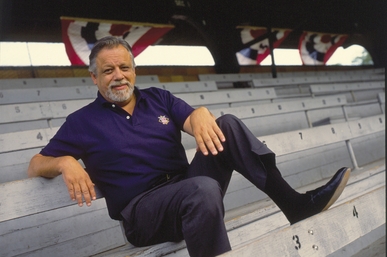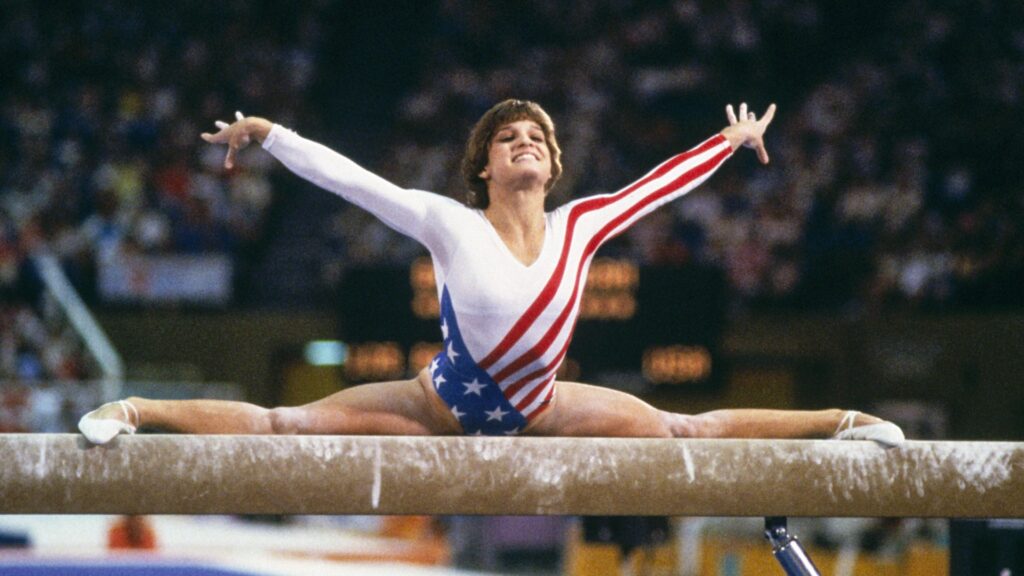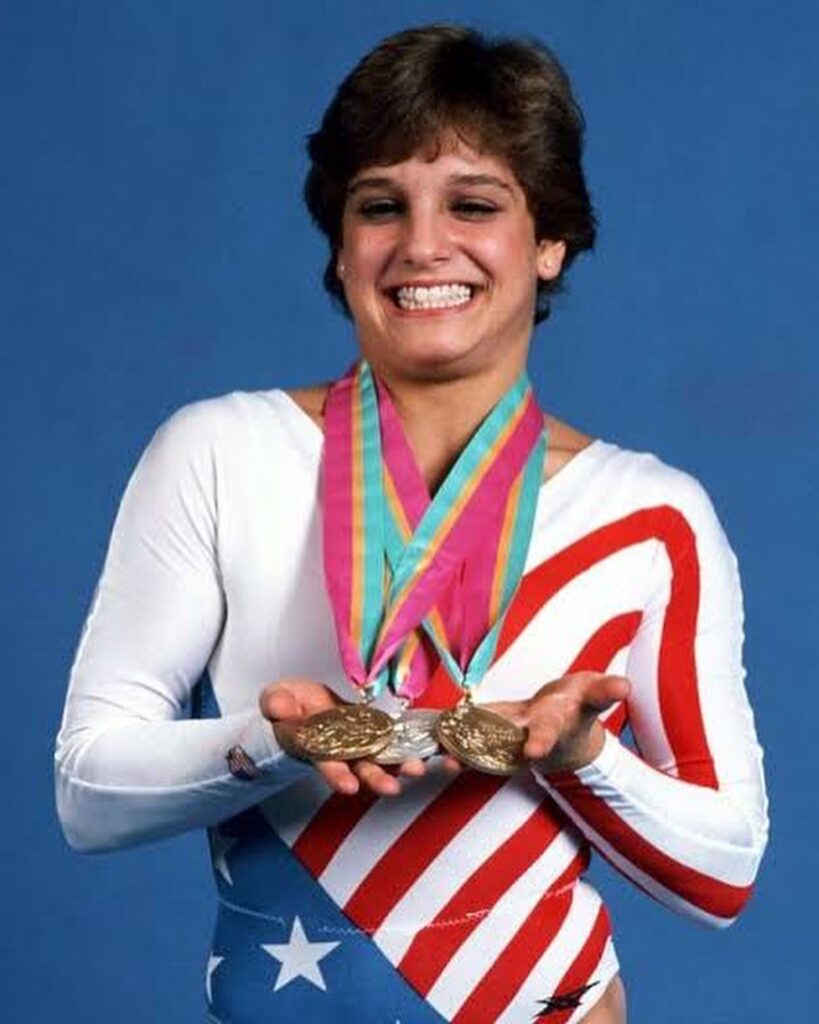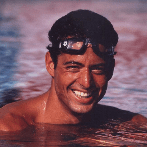
Matt Biondi
Swimming
A flawless stroke and stellar stamina translated into multiple Olympic wins and world records for this unrivaled swimmer. With an unusually large build for a swimmer – 6’6″ and 200 pounds – Biondi cut the water powerfully and earned his reputation early. In 1983, as a student at the University of California-Berkeley, Biondi was a member of the school’s NCAA Champion Water Polo Squad. (It was a role he’d repeat in 1984 and 1987.)
The following year – at just 18 years of age – Biondi struck gold, taking home top honors at the Olympics Games in Los Angeles as part of the 4 by 100 meter relay team. In 1988, Biondi warmed up for the upcoming Seoul Olympics by setting a world record with a 48.42 in the 100-meter freestyle.
It surprised no one that he subsequently became one of the 1988 Olympics’ biggest stars, taking home seven medals, including five gold. Biondi won individual gold medals in the 50- and 100-meter freestyle events and was a member of the gold-winning 400- and 800-meter freestyle relay teams and the 400-meter medley relay team. In addition, he took silver in the 100-meter butterfly and bronze in the 200-meter freestyle.
His performance at the 1992 Olympics earned Biondi a silver in the 50-meter freestyle and two golds, as a member of the 4 by 100 freestyle and 4 by 100 medley teams. The three medals brought Biondi’s Olympic total to eleven – and another record, as he tied with shooter Carl Osburn and swimmer Mark Spitz for most Olympic medals won by an American athlete.
The same year, Biondi hung up his goggles and was elected to the National Italian American Sports Hall of Fame.
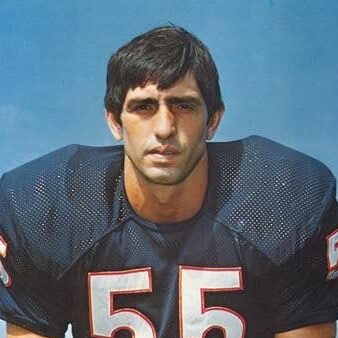
Doug Buffone
Football
A record-setting Chicago Bear legend who continued his enduring legend as an on-air sports personality.
Born June 27, 1944, in Yatesboro, Pennsylvania, Chicago Bears legend Doug Buffone was a cherished sports personality in his adopted hometown of Chicago. After attending the University of Louisville, Buffone was drafted by the Chicago Bears in the fourth round in 1966. In total, he played 14 years with the team – longer than any other player–including a stint as defensive captain from 1972 to 1979.
During his years with the Bears, Buffone set records for the most career interceptions (24) and the most sacks in a season (18 in 1968).
After retiring in 1980, Buffone went on to become an on-air sports personality. He hosted The Doug Buffone Show on the Fox Sports Network for 14 years. He was inducted to the National Italian American Sports Hall of Fame in 1992.
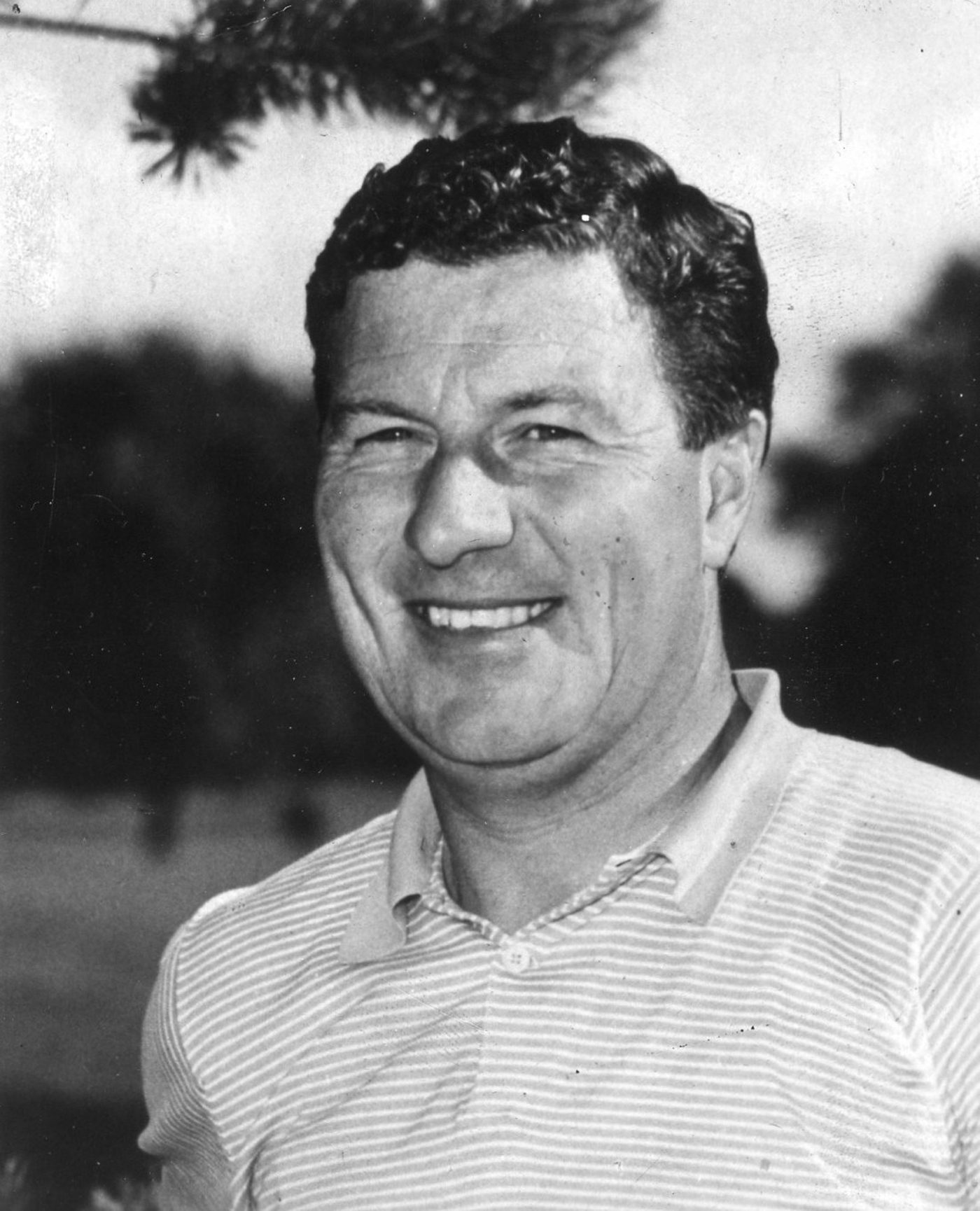
Doug Ford
Golf
Doug Ford, born in West Haven, Connecticut, turned professional in 1949 and earned his first victory in 1952. His breakthrough came in 1955 when he won the PGA Championship, an achievement that earned him the season’s PGA Player of the Year honors. In 1957, Ford made golf history with a dramatic victory at The Masters, holing out from a buried lie in a bunker on the final hole to defeat Sam Snead by three strokes.
Ford’s career was marked by consistency and success, with 19 PGA Tour victories to his name. He played on four Ryder Cup teams (1955, 1957, 1959, and 1961) and added prestigious titles such as four Met PGA Championships, two Westchester Opens, and a Met Open.
In recognition of his outstanding contributions to the sport, Ford was inducted into the Connecticut Golf Hall of Fame in 1972, and later into the National Italian American Sports Hall of Fame in 1992. In 2010, his achievements were further honored with his election to the World Golf Hall of Fame.
Ford’s career as a golf professional spanned several top courses, including winning the 1956 Met Open at Putnam Country Club. After stints at Tam O’Shanter and Vernon Hills, he concluded his career as the head professional at Spook Rock Golf Course when it opened in the late 1960s.

Bartlett Giamatti
Baseball
A lifelong baseball enthusiast and passionate Boston Red Sox fan, A. Bartlett Giamatti’s deep connection to the game shaped much of his career. In 1978, when rumors first circulated that he might become president of Yale, Giamatti famously quipped, “The only thing I ever wanted to be president of was the American League.” His love for the sport also fueled his writing, with several influential essays on baseball, including “The Green Fields of the Mind” (Yale Alumni Magazine, 1977), “Tom Seaver’s Farewell” (Harper’s Magazine, 1977), and “Baseball and the American Character” (Harper’s, 1986), which explored the cultural and emotional impact of the game.
In 1986, Giamatti was named president of the National League, where he focused on enhancing the fan experience at ballparks and instituting stricter enforcement of the balk rule. He also advocated for affirmative action to address the lack of minority representation among managers, coaches, and executives in Major League Baseball. His tenure was marked by a commitment to improving the game on and off the field, with his decisive leadership including the suspension of Pete Rose in 1988 after Rose shoved umpire Dave Pallone, as well as the suspension of Dodgers pitcher Jay Howell for using pine tar during the National League Championship Series.
Giamatti’s no-nonsense approach to leadership—demonstrated in his handling of Yale’s union issues—earned him the respect of MLB owners, leading to his election as commissioner on September 8, 1988, succeeding Peter Ueberroth. He officially took office on April 1, 1989. As commissioner, Giamatti remained steadfast in his dedication to the integrity of the game. In a landmark decision on August 24, 1989, he convinced Pete Rose to voluntarily accept permanent ineligibility from baseball, a pivotal moment in the sport’s history.
Despite his relatively short tenure as commissioner, Giamatti’s legacy in baseball is profound, having left an indelible mark on the game’s culture and structure. His leadership, vision, and unyielding commitment to baseball’s core values remain highly regarded by fans and the sport’s community to this day.
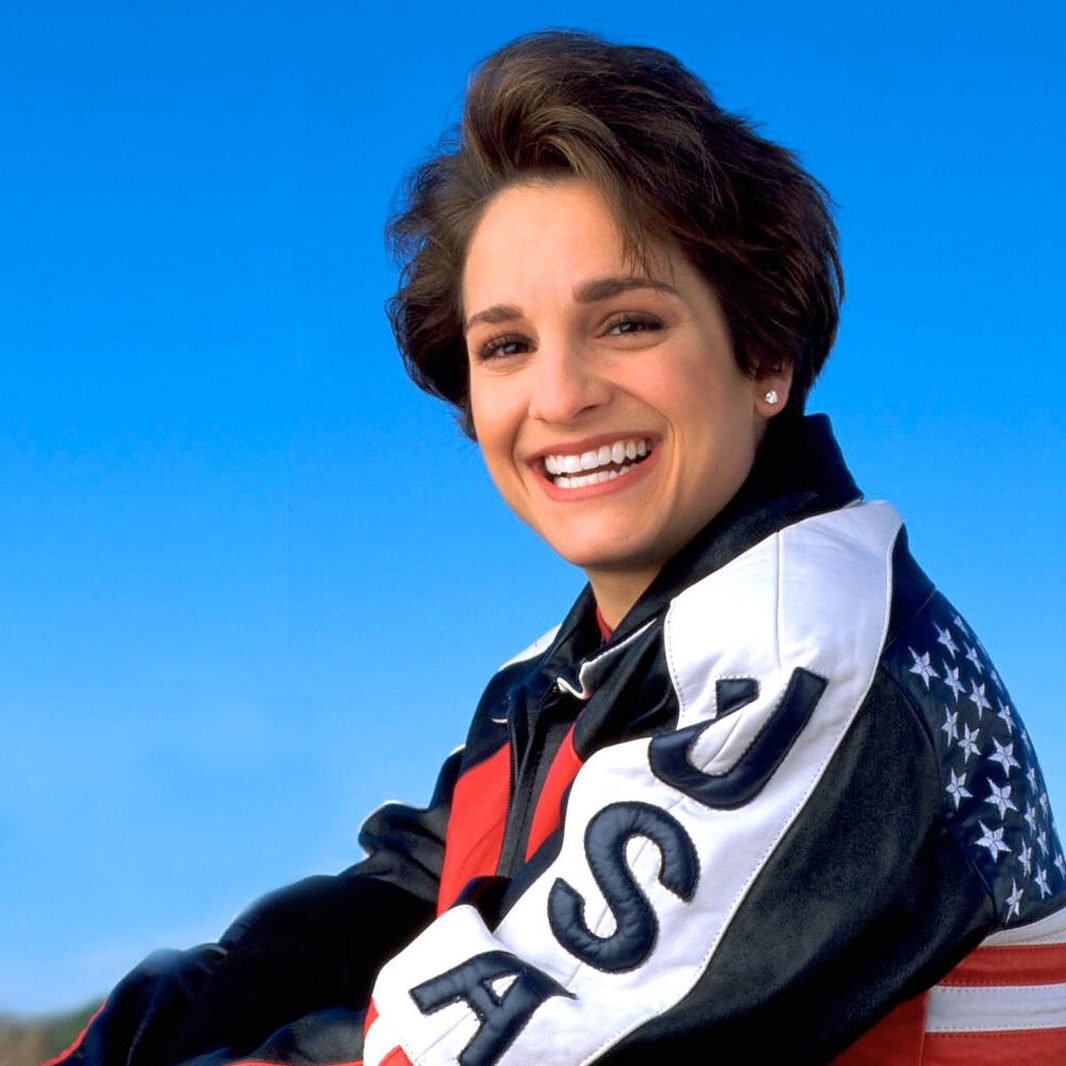
Mary Lou Retton
Gymnastics
Mary Lou Retton’s dynamic style and infectious smile revolutionized women’s gymnastics, forever changing its image and popularity. Born on January 24, 1968, in Fairview, West Virginia, Retton quickly became a trailblazer in the sport. Known as a “little powerhouse,” her athleticism and energy brought a new level of dynamism to gymnastics, shifting the focus from delicate routines to explosive performances. Her muscular and powerful physique redefined what was possible in women’s gymnastics, inspiring a new generation of American champions.
Retton’s career began with remarkable achievements, setting the stage for her to compete on the world’s biggest stage. In 1983, she won the all-around title at the American Cup, and though an injury prevented her from claiming a World Championship, she made history by becoming the first American woman to win the prestigious Chunichi Cup.
Her crowning achievement came in 1984 when Retton became the first American woman to win an individual Olympic gold medal in gymnastics. At the Los Angeles Olympics, she earned a gold in the all-around, a silver in vault, and bronze medals in both the uneven bars and floor exercise. She also helped the U.S. team win a silver medal, making her the most decorated athlete of the Games.
Retton’s success and radiant personality captured the hearts of fans worldwide, earning her accolades such as “Sportswoman of the Year” by Sports Illustrated and “Amateur Athlete of the Year” by the Associated Press in 1984. In 1985, she was inducted into the Olympic Hall of Fame, and in 1992, she was honored by the National Italian American Sports Hall of Fame. Nearly a decade after her Olympic triumph, Retton was named the “Most Popular Athlete in America” in 1993. Her enduring legacy is celebrated in the Hall of Fame’s Gallery of Champions.





